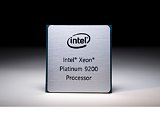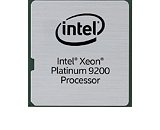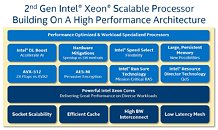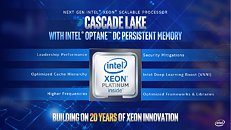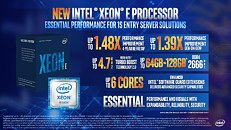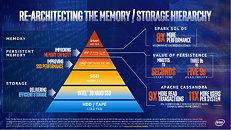
Intel Discontinues Omni-Path Enabled Xeon Processors
Intel's Omni-Path technology has been used primarily in high performance computing market, in order to provide high speed interconnect between Intel Xeon CPUs, with speeds reaching around 100 Gbps. Accompanied by different design and system integration that Omni-Path uses, it was a bit difficult to integrate into server system, while not adding much value that other technologies couldn't match or beat.
Because of these reasons, Intel is now discontinuing its last product capable of utilizing Omni-Path - the first generation Xeon Scalable CPUs. Carrying the suffix "F", these CPUs had an extra connector sticking out of CPU's PCB to enable the Omni-Path functionality (see images bellow). There were eight CPUs manufactured in total that had this extra feature, consisting out of two Xeon Platinum and six Xeon Gold CPUs, which have now reached end of life. Intel states that focus from these CPUs has shifted to other technologies like silicon photonics, which provides much greater speed reaching 100s of gigabits per second. Intel already demonstrated transceivers capable of reaching 400 Gb/s speeds with the magic of light, which will become available in 1H 2020.
Because of these reasons, Intel is now discontinuing its last product capable of utilizing Omni-Path - the first generation Xeon Scalable CPUs. Carrying the suffix "F", these CPUs had an extra connector sticking out of CPU's PCB to enable the Omni-Path functionality (see images bellow). There were eight CPUs manufactured in total that had this extra feature, consisting out of two Xeon Platinum and six Xeon Gold CPUs, which have now reached end of life. Intel states that focus from these CPUs has shifted to other technologies like silicon photonics, which provides much greater speed reaching 100s of gigabits per second. Intel already demonstrated transceivers capable of reaching 400 Gb/s speeds with the magic of light, which will become available in 1H 2020.




